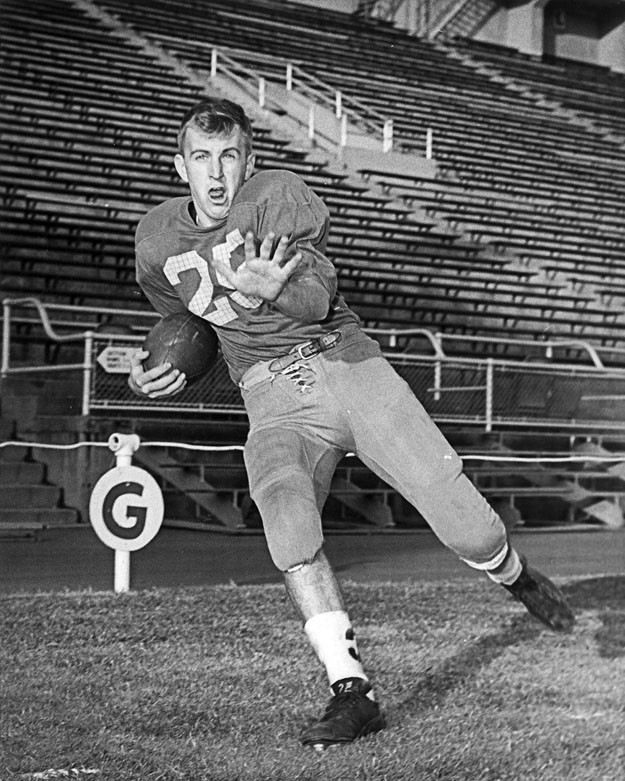This is a story of three generations, two sports, and one stadium. It’s a family tale, really, in sports clothing.
My father — Frank Murtaugh Jr. — was a halfback at Central High School in the late 1950s. He was hardly a star. Dad’s quarterback was the late Russ Vollmer, who went on to fame with some fine Memphis State teams in the early Sixties. But Dad played for some good teams at Crump Stadium under coach Ruffner Murray. The Warriors went 7-4 his junior season (1958), beating rival Tech (56-0) and Little Rock Central (28-0). Central lost to a Christian Brothers team led by Tim McCarver, 7-0, in its season finale (the Blind Bowl). As a senior, Dad was part of four consecutive shutout victories in a 6-3-1 season. Upon graduating, Dad crossed the state to attend the University of Tennessee, where he’d meet the woman he’d marry seven years later. (I arrived in 1969.)

Fast-forward five decades to last Thursday. On that afternoon, Crump Stadium hosted a middle-school soccer game between White Station and Bellevue. Sofia Murtaugh — my daughter — starts at left midfield for the Spartans. After losses to Hutchison in a pair of friendlies to open the season, White Station righted its ship with a 7-0 win. My favorite midfielder scored a pair of goals in the victory. (And on her sister’s birthday, no less.)
Middle-school soccer and high school football occupy very different strata in the Mid-South sports universe, but they’re quite connected now in my world. And this has everything to do with Crump Stadium.
Before the Liberty Bowl opened in 1965, Crump was home to the biggest football games in Memphis, one fall after another. The Memphis State Tigers called it home from 1937 to 1964, watching the concrete stands on the south side of the stadium rise 10 years after they moved into the place (thanks to the WPA). Ole Miss played there. Tennessee played there. Alabama played there, for Pete’s sake. But my dad and his high school teammates were the primary tenants. There’s something lovely there, major college programs borrowing a stadium where the boys learn the game. Something the producers of Friday Night Lights would enjoy.
In 2006, the concrete stands at Crump were demolished and the stadium was transformed into what you see today: aluminum bleachers and artificial turf. Turf with soccer lines imposing upon the gridiron. The transformation is symbolic, of course. Once the Liberty Bowl was built, the local university didn’t need “little old” Crump Stadium. (An argument could be made that a stadium seating no more than 40,000 fans is precisely what the U of M needs today.) Memphis City Schools utilizes a field at the Fairgrounds for various local teams, making Crump secondary even when it comes to the high school game.
But that plot of land is still there. The iron gates with “E.H. Crump Stadium” are still there. And countless memories, however distant, are still there.
I obviously didn’t get to see my dad play at Crump. And Dad didn’t live to see the young soccer star his granddaughter is becoming. But they now have a connection — if only in the heart of a son and father — that draws them closer. My own athletic glory days took place in Southern California (for one year) and Vermont, making the Murtaugh connection at Crump Stadium that much less likely, and a nice completion of a cross-generational sports circle.
Since moving to Memphis from New England 21 years ago, I’ve often been asked two questions: 1) Why Memphis? and 2) Why do I pay so much attention to sports? Last Thursday at Crump Stadium, with no more than 100 people in the stands, I had the answers to both.